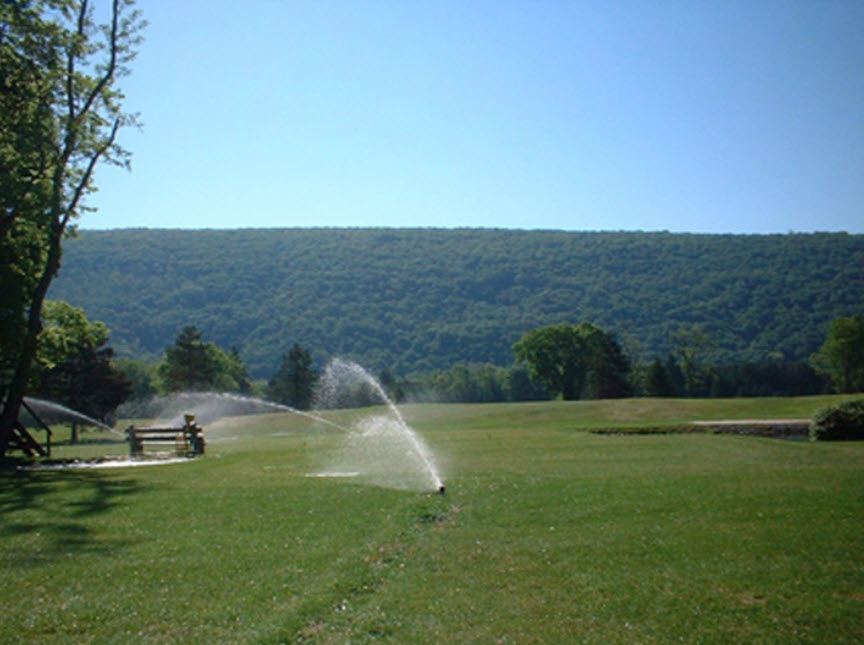Understanding Water Rights
Understanding Water Rights
What are Water Rights?

“Water rights” allow you to use water in a prescribed manner. Over the course of America’s settlement, a patchwork of unique laws, or doctrines, have given property owners vested rights in the use of both surface waters and groundwater.
At times, these legal rights present challenges that result from a more fully evolved understanding of water resource management. Climate change and pressures from population growth, irrigation, recreation, and industry have made it necessary to address competition for water while not unfairly intruding on water rights that are attached to the land. Older doctrines also fail to recognize that surface water and groundwater are intricately linked and are best managed as a connected, hydrologic system.
As one of 46 interstate agreements across the United States, the Susquehanna River Basin Compact provides a framework for avoiding water use disputes. SRBC works to balance one’s right to use water on or near their land with the cumulative and shared use of water in the Susquehanna River Basin.
My Legal Right to Use Water
Two doctrines govern the use of surface water, defined as water withdrawn from streams, lakes/ponds and rivers.
The riparian doctrine covers states east of the Mississippi River and grants a water right to property owners “whose land physically touches a river, pond, or lake.”
The doctrine limits water users to “reasonable use” of a water source, meaning that they cannot exhaust the water source or prevent other peoples’ access to it. The system is inherited from English Common Law with a long history of court interpretations.
In the western arid and semi-arid states, the appropriative rights doctrine allocates water based on historical usage rather than land ownership. Rights are based on seniority. Senior rights holders are first in line and have secured their water right even in times of drought. This system was established during the Gold Rush in the mid-1800s. Some states, like California, use a hybrid of the two systems.
For water taken from underground aquifers or wells, many eastern states follow the American Rule or Reasonable Use Rule to varying degrees. As long as the use occurs on the landowner’s property for “natural or ordinary use,” the landowner can withdraw any amount of water, without regard for neighboring uses. State permitting programs are constantly evolving to address “reasonable use” in groundwater law.
Water Rights in Today's World
Despite the Susquehanna River Basin’s ample rainfall, conflicts over water usage have arisen between its biggest water users and the states that share the basin's water resources. In order to address conflicts and avoid litigation in the courts, the Commission has regulated the withdrawal of groundwater since 1978 and surface water since 1995.
Managing Consumptive Use
Consumptive use management is a way to balance one’s right to use water with the rights of those who live downstream of the source.
When water is used and not returned to the basin undiminished in quantity, the loss is defined as being consumptively used. SRBC adopted consumptive use (CU) regulations in 1976 to help manage consumptive use during low flows and droughts. Regulated users are required to have a mitigation plan that alleviates impacts from their CU during a low flow period.
CU management is a way to balance one’s right to use water with the rights of those who live downstream of the source. It reflects an understanding of hydrology and the connections between water sources. SRBC's CU policy provides a scientific justification to limit water use or take other actions as a means to avoid water use conflicts, protect water quality, and support the natural flow of a waterway.
Water Use Approvals (Dockets)
SRBC must review and approve the following uses of water in order to ensure the sustainable use of water within the basin. SRBC coordinates these approvals with New York State, Maryland, and Pennsylvania's permitting programs as appropriate.
- Large withdrawals from groundwater or surface water (greater than 100,000 gallons per day (gpd) for any consecutive thirty-day period).
- Any CU of 20,000 gpd or more from any source.
- Any quantity of water diverted into the basin. Projects that propose to divert water out of the Susquehanna River Basin involving an average of 20,000 gpd of water in any consecutive thirtyday period.
- SRBC requires “passby flows” (for aquatic species and conservation releases of both surface and groundwater projects in the basin. Passby flows mandate that while water is being withdrawn by a user, a specified amount must pass a certain point downstream of the user from the point of withdrawal. If that flow cannot be maintained, the withdrawal must cease.
- SRBC’s Grandfathering Registration Program allows projects to preserve water uses and withdrawals that pre-dated SRBC’s regulation. Grandfathering registration provides SRBC with a means to monitor and manage the water resources of the basin, in keeping with its mission, while simultaneously allowing projects to maintain water uses and withdrawals that existed prior to the formation of the Compact and SRBC’s regulations.

Planning Tools
In some basins, cumulative consumptive water use (from all uses) poses concerns during drought and low flow events. SRBC developed a planning tool called the Cumulative Water Use & Availability Map . Users can see how consumptive use, water capacity, and water availability have changed over time within selected watersheds and surrounding areas.

The Commission has also been a technical partner in helping to implement the PA Water Resources Planning Act of 2002 (Act 220). The act established a statewide water withdrawal and use registration and reporting program. Since 2004, SRBC has allowed Act 220’s registration to satisfy SRBC registration requirements for water use of less than 10,000 gallons per day.
Act 220 also led to an update of the State Water Plan to address resource management and potential conflicts. Under this plan, SRBC has helped to identify critical water planning areas where existing or future demands may exceed the safe yield of available water resources.